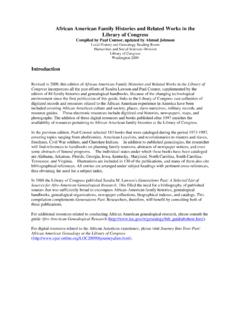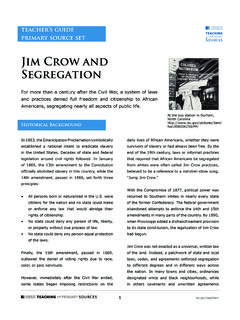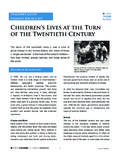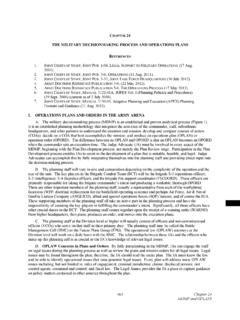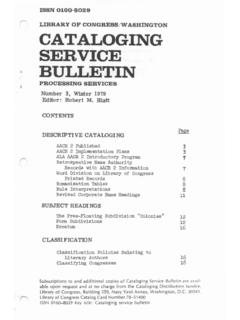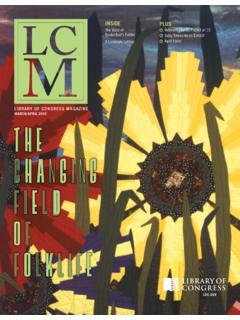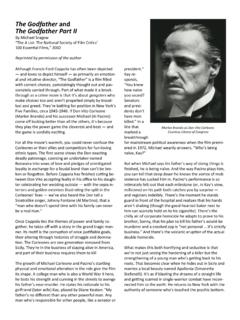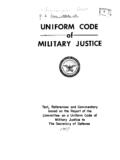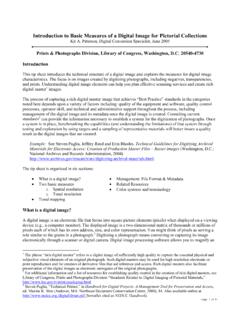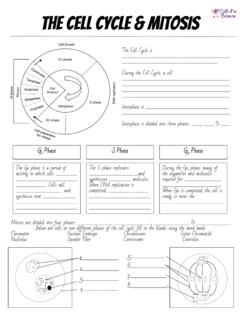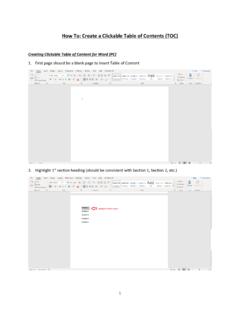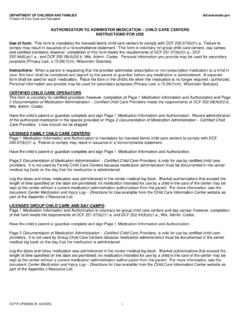Transcription of Japanese romanization table - Library of Congress
1 Japanese romanization System Tables of roman/kana equivalents based in part on both Kenkyusha s table (in p. xiii for 4th edition) and on the American National Standard System standard. Word Reading The reading of Japanese words follows standard Japanese language usage, insofar as this can be determined from standard Japanese dictionaries unless specific reading is indicated on the piece. A current modern reading is preferred to an obsolete one, except where the usage of standard authorities has established a particular reading for a particular name or book title. The characters are romanized as Nihon unless the usage of standard authorities has established a particular reading; , Dai Nippon Teikoku, Nippon ichi, Nippon eitaigura, etc.
2 If there are various readings, the reading that appears most frequently in dictionaries is used. Variant readings may be added as cross references in bibliographic and authority records based on the cataloger s judgment. Capitalization 1. Personal Names: (a) Capitalize each word of a personal name, except the particle no. Sugawara no Takasue no Musume (b) Capitalize title and terms of address, except when consisting of a single character or kana for san, sama, chan, kun, etc., that is hyphenated following a personal name. (See more examples in Word division 4,(b),(3)) K b Daishi Naikaku S ri Daijin Tanaka Kakuei but Okiku-san naikaku s ri daijin (as a generic noun) 2.
3 Place Names: Capitalize each word of a geographic name. Yokohama Nihon Rett Y raku-ch Taiheiy B s Hant T y 3. Corporate Names: Capitalize each word of a corporate name, except particles and conjunctions. Sens o Kirokusuru Kai Nihon Rikugun Chu K ron Shinsha but Chu k ron (journal title) 4. Documents and Publications: (a) Capitalize the first word of the title of a publication (book, periodical, series, etc.) Tsurezuregusa Ch k ron (b) Capitalize the first word of the name of a document (law, regulation, etc.). R d kumiaih R d iinkai kisoku 5.
4 Historical Events and Periods: (a) Capitalize each word of the name of a historical event, except particles and conjunctions. Dainiji Sekai Taisen Niniroku Jiken Meiji Ishin shi Sekigahara no Tatakai (b) Capitalize the first word of the name of a historical period. J mon jidai Rikuch jidai Heianch Sh waki 6. Peoples, Languages and Areas of Study Derived from Proper ames: Capitalize names of peoples, languages and areas of study derived from proper names. Nihonjin Amerikajin Nihongo Nihongaku Eigo 7. Religions and Sects: Capitalize names of religions and sects.
5 Bukky Kirisutoky Shint Zensh J do Shinsh 8. Structures, etc.: Capitalize names of structures, etc. Takamatsuzuka Kofun Narita K k Hibiya K en Eigenji Damu 9.
6 Derivatives of Proper Names: Lowercase words derived from names of places or religions, when the derived words are no longer considered to be proper names. When the derivative is formed by the suffix of a single character following a proper name, the proper name is capitalized and the suffix is lowercased and follows a hyphen. (See Word division , 4. Proper Names, Exceptions) nihont nihonshu nihonga butsuga washitsu wafuku y shu kutaniyaki kokutani kanji kanp kan'yaku zendera zens kirisutosha r maji but Taiwan-sei Punctuation 1.
7 Transcribe a centered point ( ) used for dividing words as a comma if it makes the meaning of romanized words clear. Ch goku Shikoku no mingei P ru Kur deru Matsumoto Seich , Yamamoto Sh gor sh For such a center point appearing between numbers, see Word division , 5. Numerals. 2. Transcribe brackets ( .. , .. , .. ) used in the manner of quotation marks ( .. ) as quotation marks. Diacritic Marks 1. Transcribe the macron ( ) over the letters a, i, u, e, and o to indicate a long vowel pronunciation. b doro shinpoj mu r d kami on san ok san ot san d iu koto ka 2.
8 Transcribe the apostrophe ( ' ) between syllables when the first syllable ends with the letter n and the following syllable begins with the letter a, i, u, e, o, and y and when it is necessary to separate romanization . Nagai Ken'ichi Shin'etsu hon'yaku Man'y shin'ainaru san'okuen shin'uchi
9 Word division 1. Sino- Japanese (on) Compounds: A compound means a word consisting of two or more Chinese characters (kanji), or of Chinese characters and kana, or of kana alone, whether established by dictionary usage or not. (a) Write binary compounds as single words . ichigen ikk Rikuch jidai Nihon kokusei jiten kokumin shugi Indo tetsugaku shiy T y Gakkai Kei Gijuku Daigaku Keizai Gakubu T ky Daigaku Ky y Gakubu (b) Trinary, derived, and other compounds. (1) Write trinary and derived compounds as single words as long as they contain no more than one binary or trinary compound.
10 Keizaiteki seibutsugaku jinseikan yuibutsuron kenk h daijinbutsu dai j jibika koseibutsugaku h shakaigaku For a word beginning with such characters as , , etc., consult any current dictionary to determine whether it is part of a word or is a prefix to the following word or words (see Word division , 3. Prefixes, Suffixes, etc. (a)). If it is appropriate, apply the provisions of (2) below. shinkansen ky taisei (2) Write trinary pseudo-compounds formed by the addition of a single character as single words . g shis kakusens kakukazoku ry seikatsu shinkenchiku daijiten daihatsumei ch taikoku zench shaku If, however, a single character is enclosed within brackets used as quotation marks, transcribe the brackets as quotation marks.
